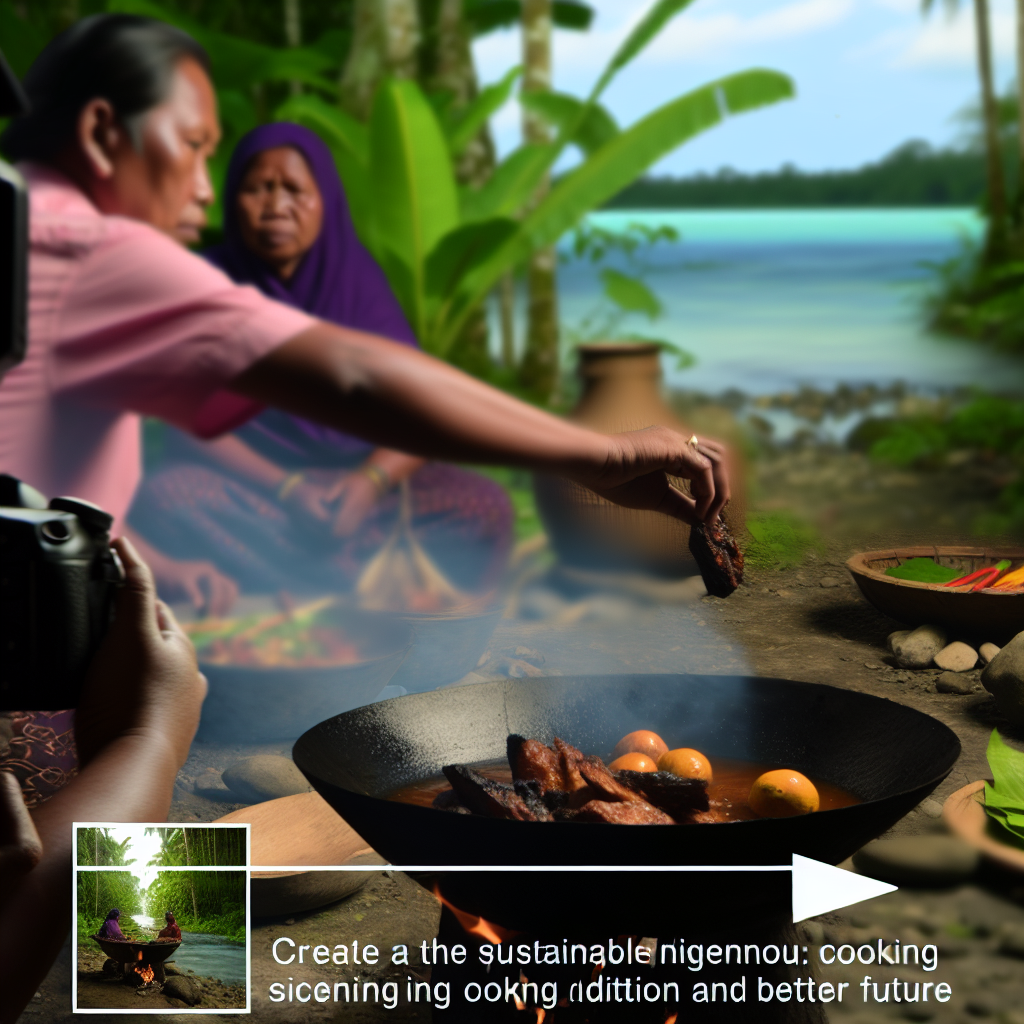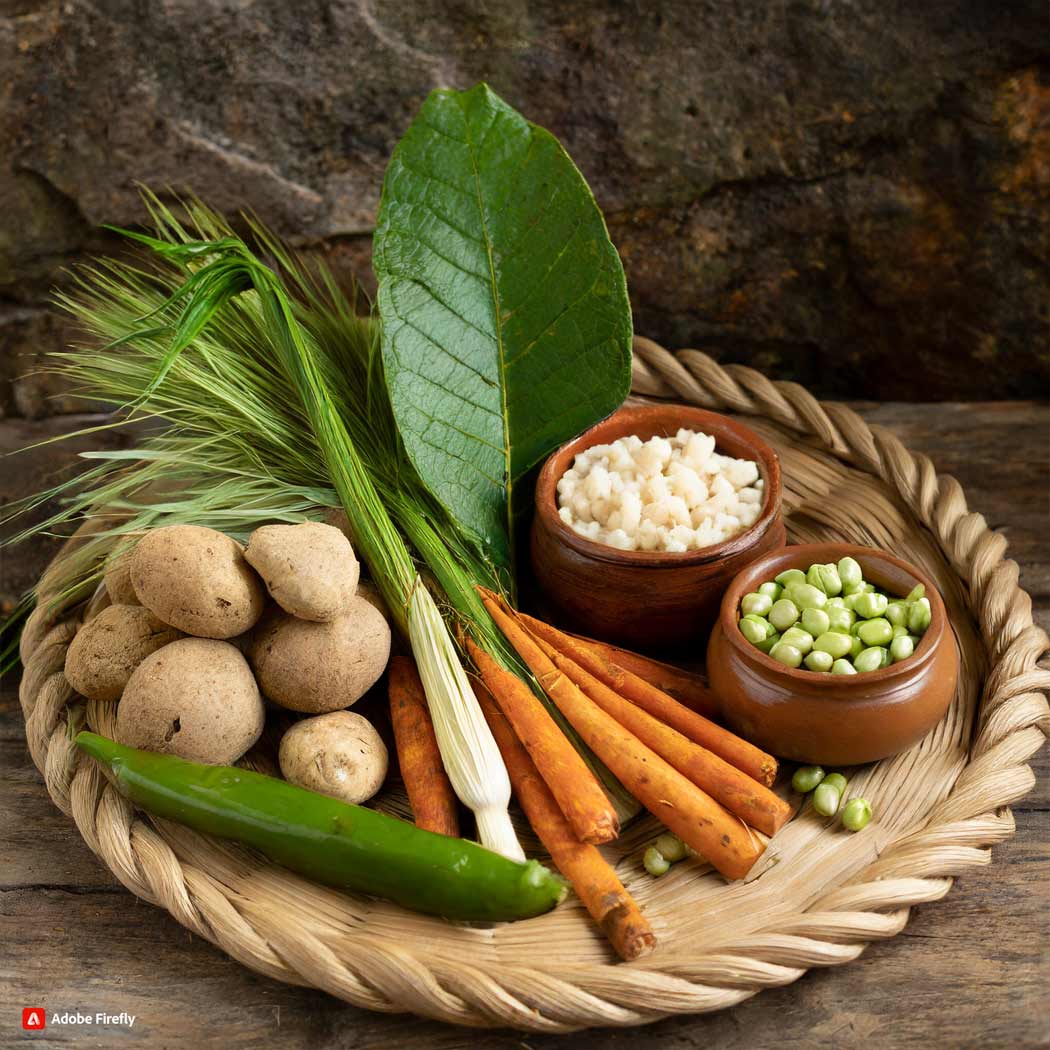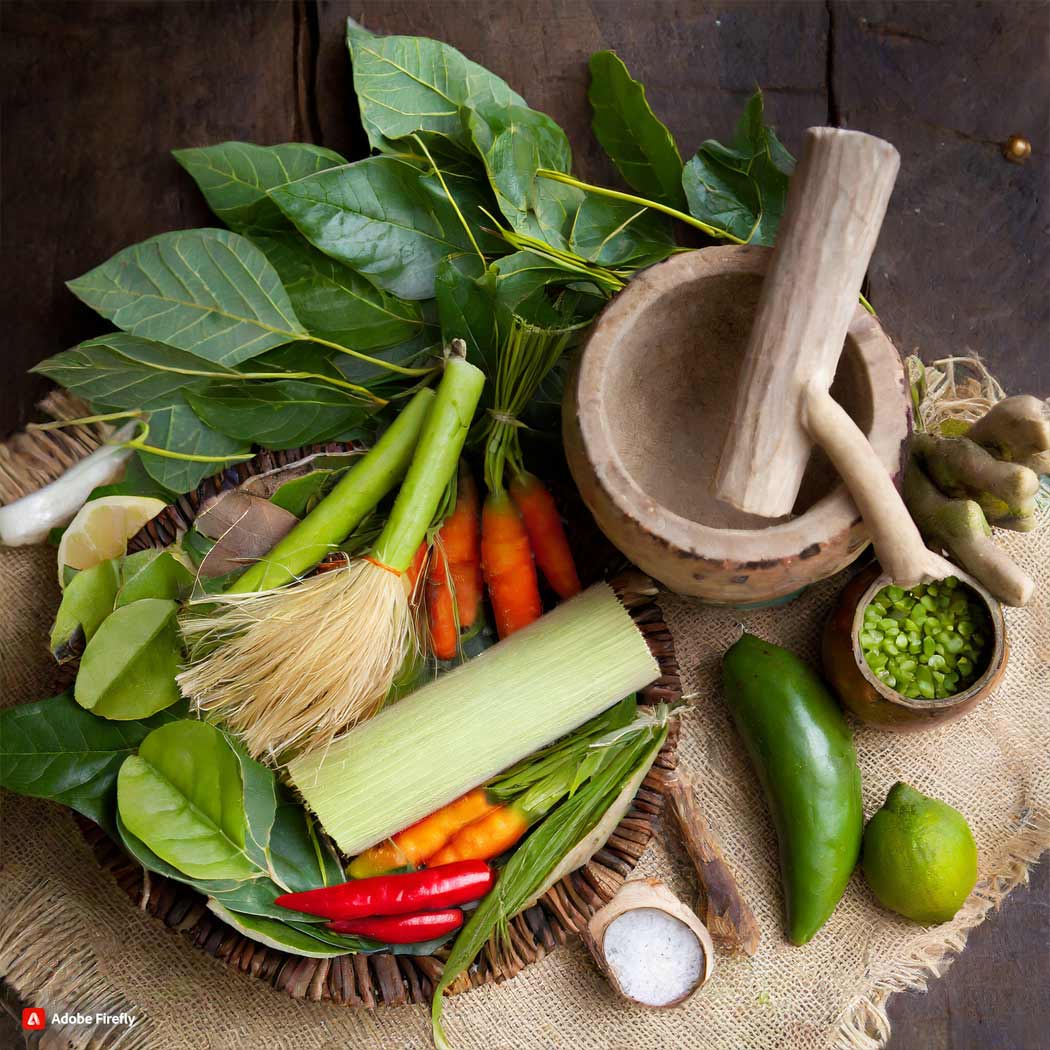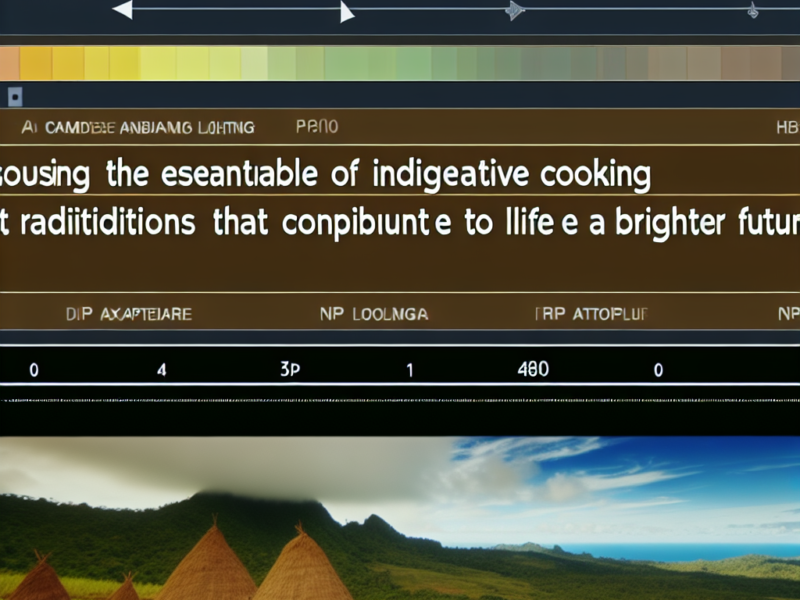“Join us in promoting harmony with nature by exploring sustainable indigenous cooking practices in Canada. Discover delicious and culturally rich recipes at 1touchfood.com and incorporate them into your cooking routine. Let’s honor and preserve the traditions of indigenous communities while also supporting a more sustainable future. Click here to start your culinary journey with indigenous foods today!” Explore Now
Introduction
Harmony with Nature: Exploring Sustainable Indigenous Cooking Practices in Canada is a research project that delves into the traditional cooking methods and practices of Indigenous communities in Canada. This project aims to shed light on the sustainable and environmentally-friendly ways in which Indigenous peoples have been cooking and preparing food for centuries.
By understanding and promoting these practices, we can work towards a more harmonious relationship with nature and a more sustainable future for all. Join us as we delve into the rich and diverse culinary traditions of Indigenous communities in Canada and learn how we can incorporate these practices into our own lives.
Traditional Indigenous Cooking Techniques and Their Impact on Sustainability

When it comes to food, Indigenous communities in Canada have a deep connection with nature. For centuries, they have relied on the land and its resources to sustain themselves and their families. This close relationship with nature has also influenced their cooking practices, which are deeply rooted in sustainability and respect for the environment.
Traditional Indigenous cooking techniques have been passed down from generation to generation, and they continue to be used today. These techniques not only preserve cultural traditions but also have a positive impact on the environment. Let’s take a closer look at some of these techniques and how they promote sustainability.
One of the most well-known traditional Indigenous cooking techniques is the use of the Three Sisters: corn, beans, and squash. This trio of crops is grown together in a symbiotic relationship, where each plant benefits the others. The corn provides a structure for the beans to climb, while the beans add nitrogen to the soil, benefiting the corn and squash.
The squash, with its large leaves, acts as a natural mulch, preventing weeds and retaining moisture in the soil. This method of planting not only maximizes the use of space but also reduces the need for fertilizers and pesticides, making it a sustainable and eco-friendly practice.

Another traditional cooking technique that promotes sustainability is the use of all parts of an animal. Indigenous communities have a deep respect for animals and believe in using every part of the animal to honor its life. This includes using the bones for broth, the organs for food, and the hide for clothing or shelter. By utilizing all parts of the animal, there is no waste, and the resources are fully utilized. This practice also reduces the need for factory farming and supports a more ethical and sustainable way of obtaining food.
Smoking and drying are also common traditional cooking techniques used by Indigenous communities. These methods not only preserve food for longer periods but also reduce the need for refrigeration and electricity. Smoking and drying also enhance the flavor of the food, making it a preferred method of cooking for many Indigenous communities. By relying on these techniques, they are reducing their carbon footprint and promoting a more sustainable way of living. Read Recipes Weight Loss Salads.
The use of wild and foraged foods is another important aspect of traditional Indigenous cooking. Many Indigenous communities have a deep knowledge of the land and its resources, and they have been sustainably harvesting wild foods for centuries. This includes berries, mushrooms, and other plants that grow naturally in the environment. By incorporating these foods into their diets, Indigenous communities are not only promoting sustainability but also preserving their cultural heritage and connection to the land.
In addition to these cooking techniques, Indigenous communities also have a deep understanding of seasonal eating. They know which foods are available during different times of the year and how to preserve them for future use. This practice not only ensures a diverse and nutritious diet but also reduces the need for importing food from other regions, which has a significant impact on the environment.
It is clear that traditional Indigenous cooking techniques have a positive impact on sustainability. These practices not only promote a more eco-friendly way of living but also preserve cultural traditions and promote a deeper connection with nature. As we continue to face environmental challenges, we can learn a lot from Indigenous communities and their sustainable cooking practices. By incorporating these techniques into our own lives, we can move towards a more harmonious relationship with nature and create a more sustainable future for generations to come.
The Role of Indigenous Ingredients in Promoting Sustainable Eating Habits
When it comes to sustainable eating habits, many people often think of plant-based diets or reducing meat consumption. However, there is another aspect of sustainability that is often overlooked – the use of indigenous ingredients in cooking. In Canada, indigenous communities have been practicing sustainable cooking for centuries, and their traditional ingredients play a crucial role in promoting sustainable eating habits.

Indigenous ingredients are those that are native to a particular region and have been used by the indigenous people for generations. These ingredients are often wild-harvested, meaning they are gathered from their natural environment rather than being cultivated. This practice not only ensures the preservation of the ingredients but also promotes a more sustainable way of living.
One of the most well-known indigenous ingredients in Canada is wild rice. This grain has been a staple in the diet of many indigenous communities for centuries. It is a highly nutritious food source, rich in protein, fiber, and essential minerals. What makes wild rice even more sustainable is the way it is harvested. Instead of using heavy machinery, indigenous communities use traditional hand-harvesting techniques, which have minimal impact on the environment. Read The Beginner’s Culinary Journey.
Another popular indigenous ingredient is bison meat. Bison has been a significant source of food for indigenous communities for thousands of years. Unlike factory-farmed meat, bison is raised in a more natural and sustainable way. They are free-roaming animals that graze on grass, which helps maintain the health of the land. Bison meat is also leaner and has a lower environmental impact compared to beef.
Aside from wild rice and bison, there are many other indigenous ingredients that are gaining popularity in the culinary world. For example, seaweed, a staple in the diet of coastal indigenous communities, is now being recognized for its nutritional value and sustainability. Seaweed is a rich source of vitamins and minerals and can be harvested without causing harm to the ocean’s ecosystem.
Indigenous ingredients not only promote sustainable eating habits but also have cultural significance. For indigenous communities, food is not just a means of sustenance but also a way to connect with their culture and traditions. By incorporating these ingredients into their cooking, they are preserving their heritage and passing down their knowledge to future generations.
In recent years, there has been a growing interest in indigenous cuisine in Canada. Many restaurants are now incorporating indigenous ingredients into their menus, and chefs are collaborating with indigenous communities to learn more about their traditional cooking practices. This not only promotes sustainable eating habits but also supports indigenous communities and their economies.
Moreover, the use of indigenous ingredients in cooking can also have a positive impact on the environment. By incorporating more plant-based and wild-harvested ingredients into our diets, we can reduce our carbon footprint and help combat climate change. Indigenous communities have been living in harmony with nature for centuries, and by learning from their practices, we can also strive towards a more sustainable future.
In conclusion, the use of indigenous ingredients in cooking plays a crucial role in promoting sustainable eating habits in Canada. These ingredients are not only nutritious and culturally significant but also have a minimal impact on the environment. By incorporating more indigenous ingredients into our diets, we can support indigenous communities, preserve their traditions, and work towards a more sustainable future. So next time you’re planning a meal, consider adding some indigenous ingredients to your shopping list and experience the harmony with nature that comes with it.
Preserving Cultural Heritage through Sustainable Indigenous Cooking Practices
When it comes to food, indigenous communities in Canada have a deep connection with nature. For centuries, they have relied on the land and its resources to sustain their way of life. This close relationship with nature is reflected in their cooking practices, which not only preserve their cultural heritage but also promote sustainability.

Indigenous cooking practices are rooted in the belief that everything in nature is interconnected and must be respected. This includes the plants, animals, and water that provide nourishment for their communities. As a result, traditional indigenous cooking methods are focused on using natural and sustainable ingredients, as well as minimizing waste.
One of the key principles of Sustainable Indigenous Cooking is the use of locally sourced and seasonal ingredients. This not only supports local economies but also reduces the carbon footprint of transportation. For example, the Inuit people of the Arctic rely on hunting and fishing for their food, which ensures that they are consuming fresh and sustainable protein sources.
In addition to using local and seasonal ingredients, indigenous cooking also emphasizes the use of the entire animal or plant. This practice not only reduces waste but also honors the animal or plant that has given its life for sustenance. For example, the Haida people of the Pacific Northwest have a tradition of using every part of the salmon, from the flesh to the bones and even the skin, in their cooking.
Another important aspect of Sustainable Indigenous Cooking is the use of traditional cooking methods. These methods have been passed down through generations and are deeply rooted in cultural practices. For example, the Métis people of the prairies use a cooking technique called “pemmican” to preserve meat. This involves drying and pounding the meat into a powder, mixing it with melted fat and berries, and then shaping it into small cakes. This method not only preserves the meat for long periods but also makes it easier to transport and consume.
Indigenous cooking practices also prioritize the use of natural and sustainable cooking tools. For example, the Inuit people use soapstone pots and pans, which are not only durable but also have a low environmental impact. These pots and pans are made from a natural material found in the Arctic and can be used for cooking, serving, and storing food.

In addition to sustainable cooking practices, indigenous communities also have a deep understanding of the importance of preserving and protecting the land. This is reflected in their traditional harvesting practices, which are based on sustainability and respect for nature. For example, the Mi’kmaq people of the Atlantic region have a tradition of only taking what they need from the land and leaving the rest for future generations.
Furthermore, indigenous communities have a strong sense of community and sharing. This is evident in their cooking practices, where food is often prepared and shared with the entire community. This not only promotes a sense of togetherness but also reduces food waste as everyone gets to enjoy the meal.
In conclusion, Sustainable Indigenous Cooking practices in Canada not only preserve cultural heritage but also promote a harmonious relationship with nature. These practices are deeply rooted in the belief that everything in nature is interconnected and must be respected. By using locally sourced and seasonal ingredients, minimizing waste, and preserving traditional cooking methods, indigenous communities are not only nourishing their bodies but also preserving the land for future generations.
Q&A – Sustainable Indigenous Cooking
1) What are some traditional Indigenous cooking practices in Canada that promote harmony with nature?
Some traditional Indigenous cooking practices in Canada that promote harmony with nature include using locally sourced and seasonal ingredients, practicing sustainable harvesting methods, and respecting the land and its resources.
2) How do these cooking practices contribute to sustainability and environmental conservation?
These cooking practices contribute to sustainability and environmental conservation by reducing the carbon footprint of food production, preserving biodiversity, and promoting a more balanced and respectful relationship with the land.
3) What are some challenges faced by Indigenous communities in maintaining these traditional cooking practices?
Some challenges faced by Indigenous communities in maintaining these traditional cooking practices include loss of traditional knowledge and access to traditional lands, limited availability of traditional ingredients, and the impact of climate change on traditional food sources. Additionally, the commercialization and industrialization of food production can also pose challenges to maintaining these practices.
Conclusion for Sustainable Indigenous Cooking
In conclusion, exploring Sustainable Indigenous Cooking practices in Canada is crucial for promoting harmony with nature. These practices not only honor and preserve traditional knowledge and culture, but also promote sustainable and ethical food systems that are in harmony with the environment.
By incorporating indigenous cooking practices into our modern food systems, we can work towards a more sustainable and balanced relationship with nature, ensuring the well-being of both our communities and the planet. It is important to continue to support and learn from indigenous communities in their efforts to maintain and share their traditional cooking practices, as they hold valuable lessons for creating a more harmonious and sustainable future.
Please follow us on linkedin. You can learn all best canadian food recipes you can check our Culinary 1TouchFood Youtube and Telegram 1TouchFood page. Don’t forget Fighting Obesity Magazine and Radio Cooking.

